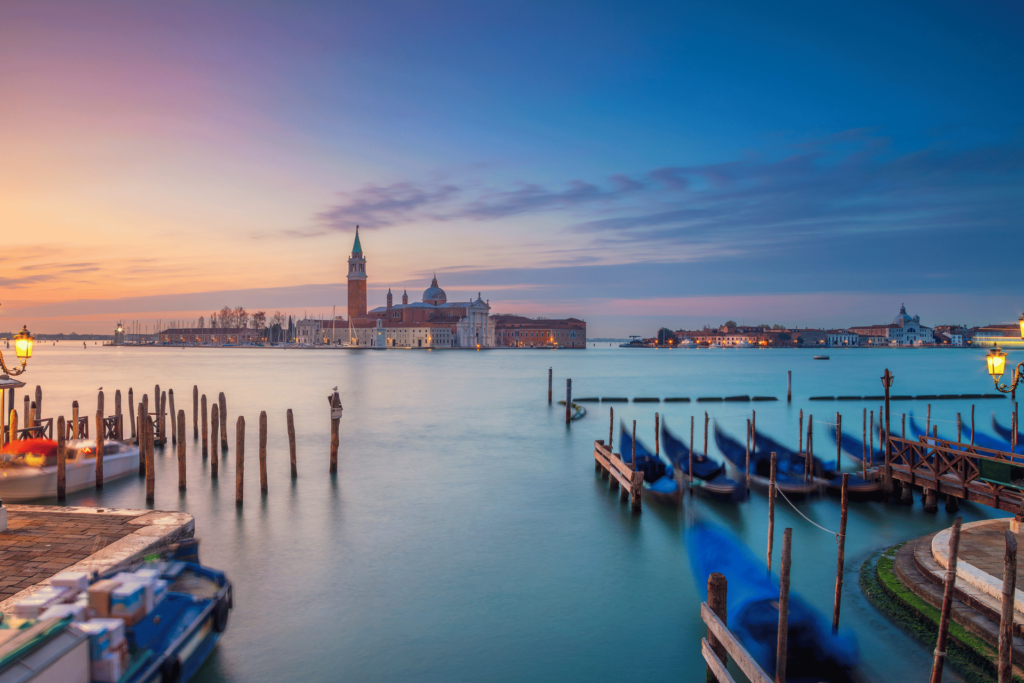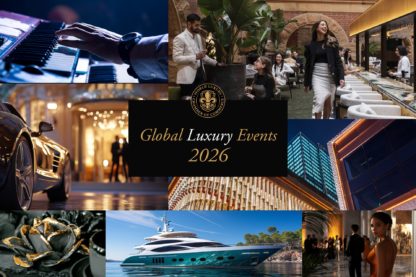In this exclusive conversation, Alexander Chetchikov, President of the World Luxury Chamber of Commerce, sits down with Nick Gibbens, the visionary Editor-in-Chief of Luxury Lifestyle Magazine. Known for his editorial precision and digital-first approach, Gibbens has redefined how luxury is portrayed in modern media—balancing innovation with tradition and storytelling with sustainability. Together, they explore the evolving nature of luxury, the role of responsible content creation, and what it truly means to connect with the world’s most discerning readers.
Alexander Chetchikov: Nick, as the Editor In Chief of Luxury Lifestyle Magazine, you’ve built a reputation for focusing on quality over quantity. How do you ensure that the magazine consistently delivers the refined, high-end content that your affluent audience craves?
Nick Gibbens: This is certainly a constant challenge and something that we are always striving to improve on. We try and use the best possible writers available and only accept freelance pitches that really have that ‘wow’ factor. Working with the top PR companies gives us access to the very best brands and talent, and we can work with them directly to develop unique and interesting angles.
We also like to work with our readership to keep on top of what they like to read as well as the topics they are not so keen on. Our extensive email database is a great tool for conducting this type of research. We also work very closely with the website data that is available to us via Google Analytics.
SEO tools such as Ahrefs allow us to analyse search trends and the keywords people are searching for, and we have started to use AI to research the competition and generate ideas for compelling content.
Finally, staying on top of industry trends and networking with professionals in our luxury sphere is something that we value greatly and is often undervalued.
AC: Luxury Lifestyle Magazine champions a forward-thinking and progressive approach to the luxury industry. Can you share some examples of how this mindset influences your editorial choices?
NG: We like to highlight the world’s best emerging luxury brands, ideally those that are yet to really be discovered and have a unique story to tell. We certainly favour those that take sustainability seriously as we strongly believe the luxury sector has a big role to play in the protection of the environment.
Championing the best British brands is also something we love doing here at LLM as we feel our readership should be buying as locally as possible and, in the process, reducing the amount of air miles and supporting local economies. We also take great pride in promoting brands that take social issues seriously and help to give back to their local communities.

AC: The luxury industry is often associated with exclusivity and tradition, but at LLM, there’s a strong emphasis on emerging brands and experimental approaches. What do you see as the future of luxury, and how do you balance tradition with innovation in your coverage?
NG: The luxury sector is undoubtedly at a crossroads. Consumer preferences are shifting quickly, and traditional notions of exclusivity are certainly being challenged. Luxury is no longer just about premium products with hefty price tags; it is now more about creating meaningful, immersive experiences that integrate cleverly into every aspect of consumers’ lives. It’s no longer just about what you wear or even drive; it’s about how every facet of life can reflect a luxury ethos, from the car you admire to a bathroom vanity inspired by its design.
As a digital brand ourselves, we have had to overcome the snobbery that only print ‘should be covering luxury.’ Our overall objective has been to create that high-quality coffee table magazine feel but using digital technology to deliver the experience. It’s where the future is, and we have spent our resources into making sure our product provides the best digital experience.
Traditional luxury brands have had to transition and cater to an online audience and, in the process, have had to improve their digital marketing and PR. We have helped them tell their story to an affluent digital audience seeking the finest products and experiences money can buy.
AC: Sustainability and responsible luxury have become increasingly important. How does LLM evaluate and feature brands that prioritize eco-friendly and socially responsible practices without compromising on the luxury experience?
NG: This is a very important question as ‘greenwashing’ is becoming increasingly common and something we take very seriously. The simple answer is lots of research into the brand (website, social media channels, and online reviews are a good starting point) and asking the right questions.
AC: With luxury brands becoming more experimental, how do you curate content that still resonates with the high-net-worth individuals who value refinement and heritage?
NG: Yes, creating content that resonates well with high-net-worth individuals requires a deep understanding of their unique desires, motivations, and behaviors. These affluent readers are demanding more than just high-end products in slick packaging – they now seek personalised experiences, exclusivity, and brands that resonate with their personal values and lifestyles. They are drawn to experiences, storytelling, and products that represent craftsmanship, heritage, and, increasingly, social impact. Our challenge is to offer them unique content that they have not consumed previously and demonstrate how experimentation can run alongside refinement and heritage. It’s a tricky balance to get right and is constantly evolving. The key is keeping on top of trends, communicating directly with HNWIs through social media, email, and focus groups.

AC: As an editor, you play a significant role in shaping the magazine’s voice. What has been the most rewarding aspect of curating the editorial direction for LLM, especially as it relates to connecting your readers with new and exciting luxury brands?
NG: I think this would be shining the spotlight on previously undiscovered luxury brands and businesses. These are usually artisan and family-run, so they have a real heart and soul. It just means more.
AC: Finally, what advice would you give to up-and-coming writers or editors who aspire to work within the luxury publishing industry and make an impact, as you have at Luxury Lifestyle Magazine?
NG: You don’t need an NCTJ qualification to become a journalist, but it can be very helpful, and I would certainly recommend it if possible. I can’t stress enough how important work experience is, and I would strongly advise anyone looking to get into journalism to approach media companies to see what opportunities they offer on this front. We have helped 50-plus aspiring writers since our launch in 2015. I would also suggest the following: create your own website, build your portfolio, read as much as possible, network and attend events, and develop and nurture PR contacts. It’s a very competitive industry, and getting that big break is difficult but not impossible if you put the time and effort in.
As luxury continues to evolve beyond material possessions into experiences, values, and storytelling, Nick Gibbens remains at the forefront—bridging heritage with innovation and championing authenticity above all else. His passion for quality journalism and dedication to spotlighting meaningful luxury narratives make him a true curator of the refined lifestyle.
We thank Nick for his time and insights and look forward to watching Luxury Lifestyle Magazine continue to shape the future of luxury media.
Stay Ahead in the Luxury Industry – Join the World Luxury Chamber of Commerce and Subscribe to Our Exclusive Newsletter for Insights, Networking Opportunities, and Access to Industry Leaders.





